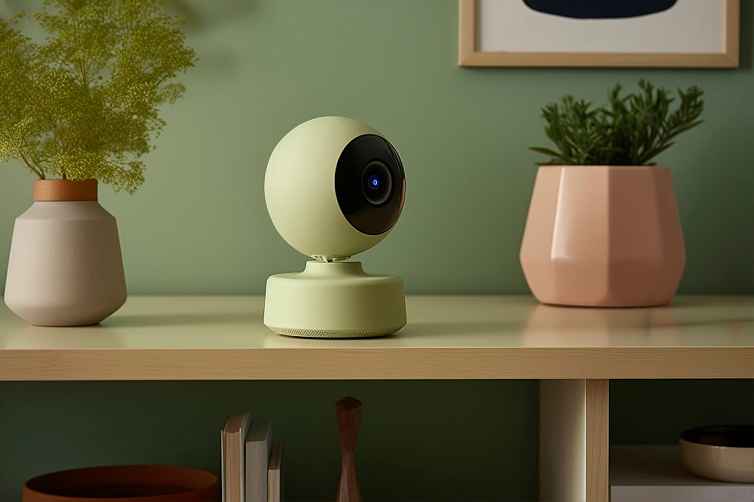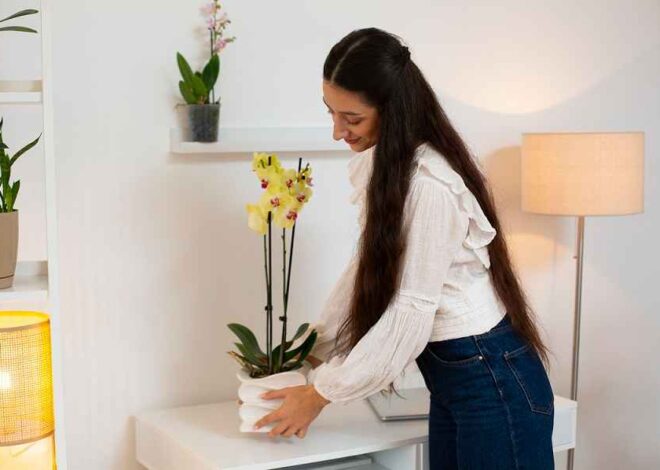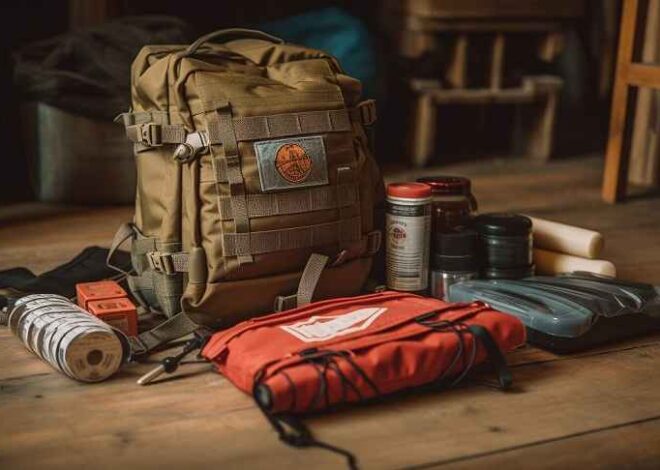
DIY Home Security Cameras: A Comprehensive Guide for Beginners
Are you looking to boost your home security without breaking the bank? With rising concerns about safety, many homeowners are turning to DIY solutions for peace of mind. Enter the world of DIY home security cameras!
Whether you’re a tech novice or a seasoned pro, we’ve got you covered. Say goodbye to sleepless nights worrying about intruders and hello to empowered protection! Let’s dive in and transform your home into a fortress—one camera at a time!
Introduction: The importance of home security
Home security is a top priority for many homeowners. With rising crime rates and the increasing value of personal property, ensuring your home is safe has never been more crucial. Feeling secure in your own space allows you to relax and enjoy life without constant worry about intrusions or theft.
DIY home security cameras have become an accessible solution for those looking to take charge of their safety. They offer flexibility, affordability, and control over monitoring your property so that you can keep an eye on things from anywhere at any time. Whether you’re a tech-savvy guru or just starting out with smart devices, this guide will walk you through everything you need to know about setting up your very own home security camera system. Let’s dive in!
Understanding DIY home security cameras: What are they and how do they work?
DIY home security cameras are a fantastic way for homeowners to enhance their safety. These cameras allow you to monitor your property without relying heavily on professional services.
Essentially, DIY systems consist of individual cameras that connect through Wi-Fi. This connectivity enables real-time streaming and recording directly to your smartphone or computer.
They come equipped with various features like motion detection, night vision, and two-way audio. You can customize the settings based on your specific needs.
Installation is straightforward too; most kits include easy-to-follow instructions. This means you can set up surveillance in just a few hours.
Understanding how these devices work empowers you to create a tailored security system that fits your lifestyle and budget perfectly.
Benefits of DIY home security cameras over professional installations
DIY home security cameras offer flexibility that professional installations often lack. You can choose the exact locations for your cameras based on your unique needs, ensuring optimal coverage of vulnerable areas.
Cost savings are significant with DIY systems. Professional installation fees can add up quickly, while installing your own setup allows you to invest more in high-quality equipment instead.
Another advantage is control over monitoring and recording settings. With DIY options, you have the freedom to customize alerts and access footage whenever needed without relying on a third-party service.
Upgrading or expanding your system becomes easier too. As technology advances or personal requirements change, adding new cameras or features is straightforward when you’re managing it all yourself. This adaptability keeps your home secure as needs evolve over time.
Factors to consider before choosing DIY home security cameras
Before diving into the world of DIY home security cameras, take a moment to assess your budget. Determine how much you’re willing to invest in both equipment and ongoing costs like cloud storage or additional features.
Next, think about the layout of your space. The size of your home influences camera placement and quantity. Larger homes may require more units for effective coverage.
Consider the specific features that matter most to you. Do you need night vision, motion detection, or two-way audio? Different models come equipped with various technologies tailored to unique needs.
Lastly, evaluate connectivity options. Ensure that your Wi-Fi is strong enough throughout your property. A weak signal can hinder camera performance and compromise security efforts effectively protecting what matters most to you.
-
Budget
Budget plays a crucial role when considering DIY home security cameras. It’s essential to set a clear financial limit before diving into your options.
Prices can vary significantly based on features, brand, and technology. Basic models may fit snugly within smaller budgets, while advanced systems with smart technology could stretch expenditures considerably.
Consider not only the initial camera costs but also potential add-ons like storage solutions or subscription services for advanced features. These expenses can add up quickly.
Do some research to find the best value for what you require. Investing wisely ensures that you get quality without breaking the bank.
Remember, staying within budget doesn’t mean compromising safety. There are plenty of affordable options that deliver effective security without overspending.
-
Location and size of your home
When choosing DIY home security cameras, the layout and size of your home play crucial roles. A larger property may require multiple cameras to cover all angles effectively.
Consider entry points like doors and windows, as these are prime areas for potential intruders. High-traffic zones like driveways or backyards also benefit from surveillance.
In smaller homes or apartments, a couple of strategically placed cameras might suffice. Think about where you spend most of your time; placing a camera near living spaces can enhance overall safety.
Additionally, think about any blind spots that need attention. Assessing locations beforehand helps ensure comprehensive coverage without overextending yourself with unnecessary equipment.
Lastly, evaluate external factors such as landscaping and lighting conditions around your home that could affect camera performance during different times of day.
-
Features and technology options
When choosing home security cameras, consider the variety of features that can enhance your setup. High-definition video quality is essential for clear visuals. Look for options with at least 1080p resolution to capture important details.
Night vision capability is another critical feature. Many incidents occur after dark, so infrared technology allows you to monitor your property even in low light conditions.
Two-way audio lets you communicate remotely through the camera, adding an extra layer of interaction and security. This feature can be useful for talking to delivery drivers or deterring potential intruders.
Additionally, smart integrations are increasingly popular. Cameras that work seamlessly with home automation systems allow you to control them via smartphone apps or voice commands.
Consider motion detection alerts as well; these notify you immediately when someone enters a defined area, keeping you informed no matter where you are.
Step-by-step guide on how to set up your own DIY home security camera system
Setting up your own DIY home security camera system is easier than you might think. Start by selecting the right cameras based on your needs. Consider factors like indoor or outdoor placement, resolution quality, and night vision capabilities.
Next, install the cameras in strategic locations. Common spots include entry points and high-traffic areas around your property. Make sure they are mounted securely for optimal coverage.
Once in place, connect each camera to your Wi-Fi network using the manufacturer’s instructions. This process usually involves downloading an app that guides you through connecting to your home’s internet.
Now it’s time to establish a monitoring and recording system. Choose between cloud storage options or local storage solutions like SD cards based on what works best for you.
Test everything thoroughly before relying on the system fully; ensure all cameras are functioning correctly and can be accessed easily from your devices.
-
Choosing the right cameras for your needs
Choosing the right cameras for your DIY home security system is essential. Start by identifying your specific needs. Are you looking to monitor the front door, backyard, or all entry points?
Consider camera types as well. Indoor cameras tend to have a wide field of view and can be compact. Outdoor models are typically weatherproof with night vision capabilities.
Resolution matters too. Higher resolution means clearer images, especially if you need to identify faces or license plates.
Look into smart features like motion detection and alert notifications. These can enhance convenience and effectiveness in monitoring your property.
You may also read (using smart home devices protect your hom)
Don’t forget about storage options! Some cameras offer cloud storage while others come with local storage solutions like microSD cards. Choose what fits best within your budget and preference for accessibility.
Lastly, check compatibility with existing devices at home—integrating everything seamlessly will save you time later on.
-
Installing the cameras and setting them up with your Wi-Fi network
Once you’ve selected your cameras, the installation process begins. Start by choosing strategic locations for optimal coverage. Think about entry points and blind spots in your home.
Next, mount the cameras securely using screws or adhesive options that come with them. Make sure they’re at a height where they can capture clear images without being easily reachable.
Now it’s time to connect your cameras to your Wi-Fi network. Most modern devices use an app for this step. Follow the on-screen prompts carefully; you’ll typically need to scan a QR code or enter your Wi-Fi password.
After setup, test each camera’s connection and ensure you have live streaming capabilities. Adjust angles as needed to get the best views of critical areas around your home. Regular check-ins will help maintain consistent performance over time.
-
Setting up a monitoring and recording system
Once your cameras are installed, the next step is to set up a monitoring and recording system. This is crucial for ensuring you capture all important events around your home.
Start with choosing an appropriate software or app that pairs well with your cameras. Many brands offer dedicated apps that provide real-time viewing and notifications straight to your smartphone.
Next, decide how you want to store footage. Options typically include cloud storage or local storage on an external hard drive or a Network Video Recorder (NVR). Cloud solutions often come with subscription fees but give you access from anywhere.
Set the recording schedule according to your lifestyle—some people prefer 24/7 recording while others opt for motion-triggered recordings only. Test everything after setup; ensure alerts are working and video quality meets your expectations. Regularly check these settings as needed for optimal performance.
Tips for maintaining and troubleshooting your DIY home security cameras
Keeping your DIY home security cameras in top shape is essential for effective monitoring. Regularly check the camera lenses for dust or debris that could obstruct the view. A simple wipe with a microfiber cloth can do wonders.
Make sure your cameras are running the latest firmware. Manufacturers often release updates that fix bugs and enhance performance. Set reminders to check for these updates monthly.
Also, test the Wi-Fi connection frequently. Weak signals can lead to buffering or disconnections, rendering your system less reliable. Consider placing a range extender if you notice persistent issues.
Lastly, familiarize yourself with common troubleshooting steps like resetting devices or reviewing settings through the app. Knowing how to quickly address minor glitches keeps your surveillance seamless and stress-free.
Comparison with professional security systems
When comparing DIY home security cameras with professional systems, cost is often a major factor. Professional installations usually involve higher upfront fees and monthly monitoring costs, while DIY solutions can be budget-friendly.
Installation time varies significantly as well. Professionals come in, set everything up for you quickly. With DIY systems, you have the freedom to take your time and customize according to your needs.
Another point of consideration is control. A DIY setup offers flexibility; you decide where cameras go and how they operate. In contrast, professional systems may limit customization based on their protocols.
However, reliability can differ too. Professional services might provide 24/7 monitoring by trained personnel who respond swiftly in emergencies—a feature absent from most basic DIY setups.
Ultimately, the choice between these options depends on personal preferences for involvement versus convenience and peace of mind versus cost savings.
Conclusion: Is DIY home security camera installation worth
When it comes to safeguarding your home, the decision between DIY home security cameras and professional installations can be a significant one. Weighing the benefits of cost savings against potential challenges is essential.
DIY systems offer flexibility and control, allowing you to customize your surveillance based on your specific needs. They’re often more affordable than hiring professionals, making them an appealing option for many homeowners. Plus, with advancements in technology, these systems are becoming increasingly user-friendly.
However, it’s vital to ensure you’re comfortable with installation and ongoing maintenance tasks that come with DIY solutions. If you have the time and willingness to learn about setup or troubleshooting issues that arise over time—then going the DIY route could be highly rewarding.
At the end of the day, whether or not installing home security cameras yourself is worth it boils down to personal preference and situation specifics. With thoughtful planning and careful consideration of your unique circumstances, you can create a secure environment for peace of mind at home without breaking the bank.
You may also read (home electrical safety)


